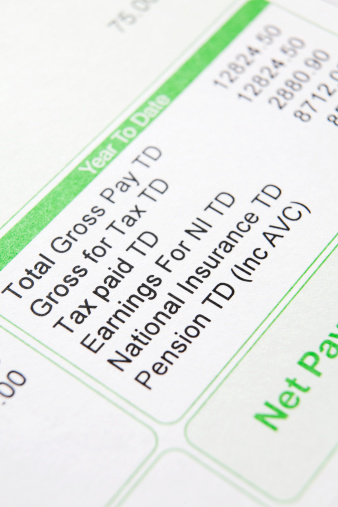How to Prorate the Foreign Earned Income Exclusion
When you first move offshore, you will need to know how to prorate the foreign earned income exclusion. This is because, you will be using the physical presence test in your first year and, presumably, won’t move abroad on January 1, so you will need to prorate the foreign earned income exclusion.
Let me take a step back. As you probably know, the Foreign Earned Income Exclusion allows you to exclude $99,200 in salary from your US taxes in 2014. To qualify, you must be a resident of a foreign country (residency test) or be out of the United States for 330 out of 365 days (330 day test or physical presence test).
Under the physical presence test you can choose any consecutive 12 month period for your Foreign Earned Income calculation. So, you might have moved abroad on Mach 15, 2014 and begin your new job on April 1, 2014. Therefore, you will probably want to prorate the Foreign Earned Income Exclusion from April 1, 2014 to April 30, 2015.
In this case, you should be out of the U.S. 330 days from April 1, 2014 to April 30, 2015. You could use March 15th as your start date, but that would mean you lose 15 days of the exclusion and these 15 days can’t be recouped when you file your 2015 return.
I note that it is necessary to prorate the Foreign Earned Income Exclusion because most people don’t leave the good ole USA on January 1, so they need to prorate in the year they begin their new lives. Also, to qualify as a resident of a foreign country, you must be out of the US for a full calendar year. Therefore, the physical presence test is common in year one.
In the example above, it would be possible to use the 330 day test to qualify for the FEIE from Aril 1, 2014 to December 31, 2014, and then use the residency test to qualify for the exclusion from January 1, 2015 to December 31, 2015. However, this will not affect your exclusion amount. You will still need to prorate the Foreign Earned Income Exclusion. In other words, there is no financial benefit to converting to the physical presence test, though you will be able to spend more time in the United States. The prorated exclusion amount may not exceed the maximum allowable exclusion.
To prorate the Foreign Earned Income Exclusion, use the number of days you were physically present during the tax year over 365. That is to say, exclusion is calculated by dividing the number of days physically present in the foreign county or countries (numerator) by the number of days in the year (denominator). (See Publication 54, section on part-year exclusion.)
In the example above, your 2014 exclusion is April 1, 2014 to December 31, 2014, or 274 days. Each day is worth $271.78 ($99,200 / 365= $271.78), so you can exclude up to $74,467.72 in 2014. If you earned $100,000 in salary from April 1, 2014 to December 31, 2014, you will owe U.S. tax on about $25,500 ($100,000 – $74,467 = $25,532.28) because of the prorated Foreign Earned Income Exclusion calculation.
Prorating the Foreign Earned Income Exclusion is common in the first year an ExPat moves abroad. It is also possible to prorate if you are forced to leave the country due to civil unrest.
According to the instructions for IRS Form 2555, under Waiver of Time Requirements:
If your tax home was in a foreign country, you reasonably expected to qualify for the Foreign Earned Income Exclusion in that country, but were forced to leave because of war, civil unrest, or similar adverse conditions, the time requirements residency test or the 330 day test may be waived. You must be able to show that you reasonably could have expected to meet the minimum time requirements if you had not been required to leave.
To support this rule, the IRS publishes a list of countries and the dates they qualify for the waiver. If you left one of these countries during the period indicated, you can claim a prorated Foreign Earned Income Exclusion on Form 2555 for the number of days you were a resident of or physically present in the foreign country.
As I wrote above, you must reasonably expect to qualify for the Foreign Earned Income Exclusion in the affected country. This is aimed at contractors moving in to dangerous areas. Basically, if you move to a dangerous area, and then decide to leave or are forced to leave, you don’t get the benefit of this rule. If you move to an area after it is listed in the IRS publication, you are on notice that it is dangerous and don’t get the benefit of this section.
I hope you have found this article helpful. Please post any questions in the comments below and I will respond online. You may also contact me directly at info@premieroffshore.com.











